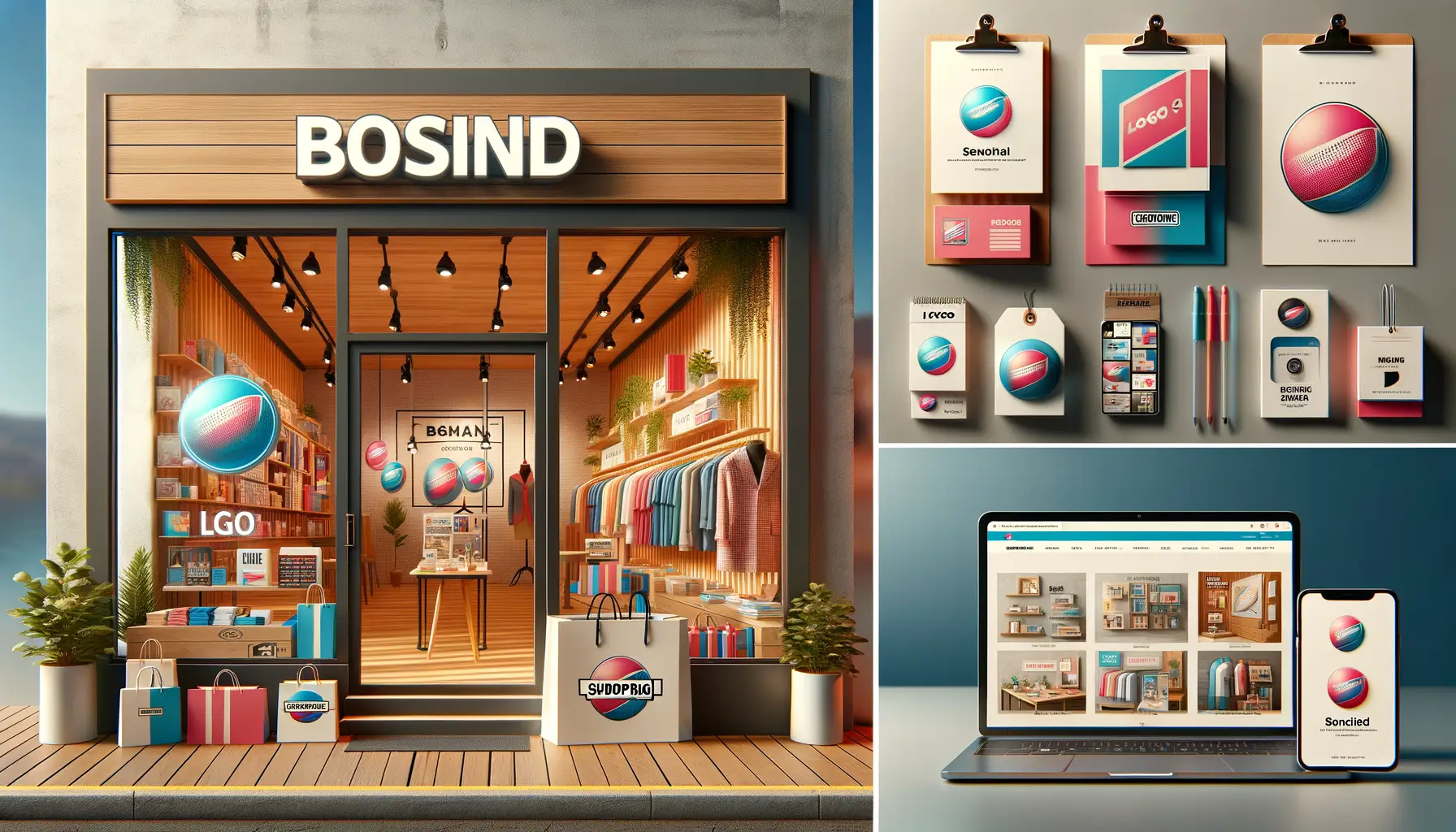What is Branding and Why it Matters in Web Design
Branding isn’t just about a pretty logo or a memorable tagline—it’s the beating heart of your digital identity. Think of it as the personality your website wears front and center, shaping how visitors feel, think, and respond. It whispers (or sometimes shouts) who you are, what you stand for, and why someone should care. Now, let’s connect the dots: when paired with web design, branding becomes an experience, not just an impression.
The Bridge Between Emotion and Design
Have you ever landed on a website and instantly felt a vibe—that gut sense that the brand resonates with you? That’s branding at work. It’s in the way colors match your mood, fonts exude professionalism, and imagery tells a story before words even appear. Without strong branding, even the most beautiful design falls flat. And here’s the kicker: ineffective branding creates confusion, which scares users away faster than a buffering video.
- Colors that speak to emotions and align with your identity.
- Typography that reflects your voice—quirky, bold, sleek, or serious.
- Tone of voice throughout text that feels familiar, relatable, and on-brand.
Why does it matter? Web design might grab attention, but branding keeps people engaged. It’s the key ingredient that makes a site unforgettable, transforming casual clicks into loyal connections.
Key Elements of Consistent Branding in Web Design

Why Visual Identity is Your Brand’s Best Friend
Picture this: Your website is like a stage, and your brand is the star performer. If the color palette, typography, and tone don’t align, it’s like showing up to an orchestra performance with instruments all playing different melodies. Chaos, right? That’s why your visual identity needs to hit the same notes every single time.
Start with colors! Ever noticed how Coca-Cola red or Tiffany blue stick in your memory? That’s no accident. Choose a color scheme that embodies your brand’s personality and let it shine across every page, button, and background. Then there’s typography—no one trusts a site that mixes playful comic sans with rigid serif fonts. Pick a font duo (or trio) and stick to them religiously.
And finally, don’t underestimate images and iconography. Whether it’s angular graphics to signal boldness or soft, rounded designs for warmth, visuals speak louder than words. Sprinkle these cohesive elements everywhere—headers, CTAs, and even footer icons. Your audience will thank you with trust and clicks.
The Magic of Tone and Messaging
Here’s where your brand gets its unique voice—think of it as the way you’d talk to your dream customer while grabbing coffee. Are you playful, professional, quirky, or heartfelt? It’s not just about what you say; it’s how you say it.
Here’s how you nail it:
- Taglines and headlines: Keep them consistent! If your homepage oozes humor, don’t make your “About Us” section sound like a legal contract.
- Microcopy: Even the smallest details matter. Buttons, error messages, and tooltips should reflect your brand’s personality. (“Oops, something went wrong!” can be funnier or friendlier than “Error 404.”)
- Storytelling: Share stories that echo your brand’s values. Think relatable anecdotes, testimonials, or even quirky product descriptions—your audience loves a good yarn.
Keep the tone steady throughout, and your visitors will feel like they’re chatting with the same friend on every page.
How Consistency Builds Trust and Recognition

The Power of Familiarity and Reassurance in Branding
Picture this: you’re scrolling through a sea of websites, searching for that one brand you truly trust. Suddenly, *bam!*—there it is. The familiar colors, that distinct logo, and the tone of voice that feels like an old friend. You didn’t even have to think twice; you knew exactly who it was. That’s the magic of consistency in branding.
When your online presence mirrors itself across every page, post, or interaction, you’re telling your audience, “Hey, we’re solid, dependable, and here to stay.” This isn’t just about looking pretty either—it’s about building emotional rapport.
How Does Consistency Create Recognition?
Consider your branding as your signature. Every design choice from your typography to your messaging style needs to sign off with the same confident flourish. Here’s why it matters:
- Repetition breeds recognition: The more people see your consistent visuals and tone, the quicker they recall your brand.
- Trust anchors loyalty: Fluctuating visuals or mismatched messaging can make users question your reliability.
So, aim for harmony in your branding orchestra—because when everything plays in tune, people not only remember you; they believe in you.
Practical Steps to Achieve Consistency in Branding

Start with Your Brand’s Core: Define Your Identity
Consistency blooms from clarity. Before you even think about tweaking colors or adjusting fonts, press pause and ask: “What does my brand stand for?” Your brand’s identity is your compass—those values, goals, and the story behind what you do. Without this foundation, everything else will feel scattered, like throwing paint at a wall and hoping for art.
Think of brands like Apple or Coca-Cola. Their voice and visuals align because they’ve nailed their purpose. Follow their lead: create a style guide that outlines your color palette, logo variations, tone of voice, and even quirky details like whether your emails sign off with “Cheers!” or “Warm regards.” Once these are set in stone, your brand isn’t just recognizable—it’s unforgettable.
- Define your mission and values (keep it authentic).
- Sketch out your visual identity—logo, typography, and colors.
- Document it all in a centralized brand guide.
Stay Vigilant: Consistency Needs Maintenance
Branding isn’t a “set it and forget it” job. Think of it as a garden—it thrives with regular care. Train your team across departments about staying true to the brand. Are they using the same tone on social media? Are web pages sticking to your design templates?
Even tiny inconsistencies, like a slightly off shade of blue or casual wording where professionalism is key, can weaken trust faster than you’d expect. Use tools like Canva Pro or Figma for shared assets and collaborate seamlessly. And don’t be afraid to audit your own website every few months; fresh eyes can reveal cracks in consistency you hadn’t noticed.
Examples of Effective Consistent Branding in Action

How Big Brands Nail Visual and Emotional Consistency
If you’ve ever scrolled through Instagram and instantly recognized a post from Coca-Cola, even before spotting their iconic logo, congratulations—you’ve just witnessed branding mastery. Their secret? A flawless symphony of visual cues: the unmistakable red-and-white palette, that signature ribbon design, and imagery that screams joy, nostalgia, and togetherness. It feels as if Coca-Cola has wrapped its values into every pixel they share.
Apple, too, turns heads with its sleek, minimalist approach. Whether you’re on their website, holding an iPhone, or strolling past an Apple Store, there’s an unshakable sense of unity. The fonts, the color schemes, even the tone of their product descriptions—they all whisper the same message: innovation meets elegance.
- Spotify: Playlists may vary, but their aesthetic does not. Neon greens, energetic curves, and quirky marketing copy ensure you never confuse them with competitors.
- Nike: From their dynamic web design to motivational social media posts, it’s all about action and breaking limits. “Just Do It” feels alive in every interaction.
These brands prove that consistency isn’t restrictive—it’s a magnet that pulls your audience closer, page by page, scroll by scroll.

